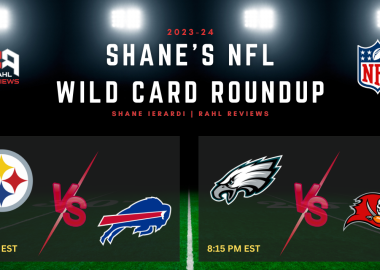
Welcome to the mayhem, the madness, and the outright chaos that is Suicide Squad: Kill the Justice League, where the line between hero and villain blurs with every button press. Strap in as we navigate through Metropolis, armed initially with nothing but our wits, a questionable moral compass, and a squad that’s as dysfunctional as they come.
This is not your average stroll through Metropolis; it’s a deep dive into the DC Universe through the eyes of its most notorious anti-heroes. Led by the infamously unyielding Amanda Waller, players are thrust into the shoes—or fins—of Task Force X, a ragtag ensemble of villains tasked with a mission so insane, it might just be brilliant: take down the Justice League gone rogue.
Unable to reach Server, please attempt to sign in again: The First Enemy You’ll Face
Before we dive headfirst into the action, let’s talk about the elephant in the room: the game’s need for a constant internet handshake. Envision yourself primed for an epic showdown against the Justice League, Brainiac, and otherworldly threats, only to be thwarted by the absence of Wi-Fi. It’s a tough pill to swallow, especially after dropping $100+ for the Deluxe Edition. For me, I was disconnected from the Servers and unable to play early on and that continued into the game’s launch on Friday, September 2, 2024.
While Xfinity’s less-than-stellar, monopolistic service played a part in the game’s disconnection debacle at launch, Rocksteady Studios isn’t off the hook. Their decision to launch a game that still seems to be a work in progress, struggling with stable connectivity, also took its toll on my gameplay experience.

Task Force X: Heroes or Headaches?
Being as I started my story off with Deadshot, it’s only fitting to begin with him. You’re able to pick between the four characters at any moment by pressing left on your directional pad, but you’ll also notice that the game psychs up a character at certain points during the story, as a way of motivating you to use a specific one. Each character has its own abilities that make them unique, and you’re able to customize their weapons and cosmetics at any moment throughout the story as well.
Deadshot’s Dilemma: Sniping or Button Mashing?
Deadshot starts us off with a bang, literally. His gameplay is a sharpshooter’s dream, marred by melee mechanics that feel more automated than a fast-food kiosk. His jetpack allows for you to scale from building to building with ease, alongside his lateral movement and great shooting from a distance. These abilities can be out-shadowed, though, since his melee attack can be accomplished by simply bashing the melee button. After a while he becomes boring, but I still find myself enjoying the feel of the snipers from a distance and Deadshot’s abilities help you snipe that much better.
King Shark’s Comedy Club: Brawn & Banter
Then there’s King Shark, who brings the muscle and the chuckles. His segments are like watching a stand-up routine while bench-pressing a truck. It’s a delightful mix that keeps the narrative buoyant, even as you’re sinking your teeth into the action. If you’re looking for a character with power, King Shark is your guy.. or shark.
Harley Quinn & Captain Boomerang: Mayhem at Maximum Velocity
Harley Quinn and Captain Boomerang turn the chaos dial up to eleven, each offering a gameplay style that’s as unpredictable as a Gotham weather forecast. Whether you’re swinging or zooming, they keep the game’s pace as erratic and electrifying as their personalities.
Into the Heart of Darkness: The Story Unfolds
As our anti-heroes carve their path through the story, the game does a spectacular job of weaving their unique abilities and backstories into a narrative tapestry that’s as rich and complex as the characters themselves. From Arkham’s dark corridors to the bright lights of Metropolis, every chapter feels like a new episode in a DC show you’d probably find on HBO nowadays.
As the narrative unfolds, Suicide Squad delves into the complexities of heroism and villainy, challenging Task Force X to find their place in a world turned upside down. It’s a tale that’s as much about finding redemption as it is about unleashing havoc.
The Mayhem of Metropolis
Metropolis becomes your playground from the very start, a city where every corner holds a new challenge, from Brainiac’s skull ship looming overhead to the sudden, heart-stopping appearances of Batman. Each encounter is a reminder that in Suicide Squad: Kill the Justice League, you’re playing in a league that’s anything but just.
Arming Up with Penguin, Poison Ivy & the Gang: A Necessary Evil
You’ll eventually need more than the weapons and equipment you’ve stolen from the Hall of Justice, and that’s where the Support Squad comes into play. You’ll eventually need to up your arsenal and Penguin’s your guy, proving that sometimes, you need to get your hands dirty to clean up the streets. It’s a gritty, necessary step on your path to taking down the corrupted heroes, filled with the kind of moral ambiguity that would make Batman pause… if he wasn’t on the receiving end of your mission.
You’ll come across villainous legends of the Batman series, like Oswald Cobblepot and Poison Ivy for example, who assist by giving you different types of in-game support to help you take on Brainiac and the corrupt-minded Justice League. You’ll also have an opportunity to craft and upgrade weapons at their stations throughout the map.

Penguin doesn’t take a liking to you at first, as I’m sure you’d expect, especially once he finds out who you’re working for (A.R.G.U.S.). He attempts to take you out with his goons, but that backfires. With the world coming to a probable end, Penguin decides to help you with the weapons you need to take on the Justice League.
Side Quests & Contracts Galore
Colonel Rick Flag’s introduction opens up a world of side quests, offering the chance to gear up with legendary loot. It’s an intriguing twist, turning what could be mundane tasks into crucial steps towards your goal. Yet, the true challenge lies not in the combat but in the clusters of enemies that test your patience and strategy, a repetitive dance that even the Joker might find tedious.
This is something common in video games like Suicide Squad. It reminds me of the Spiderman games, where you travel around an open world where the majority of missions consist of you beating up a horde of enemies before moving on to the next room, just to beat up another horde of enemies. This can get annoying, but the loot rewards, especially early on, help progress you throughout the story and motivate you to keep grinding.
If it’s not Rick chirping in your ear to complete a side mission, then it’s probably Hack. Hack is a human-like software that helps you progress in the story. Outside of her friendly tech advice and occasional hacks to get you into places, she also talks with you about Contracts and Talents. Contracts give you an opportunity to prioritize two things within the game at a time. Accomplishing these small tasks, that can sometimes be daily or time sensitive, allow for you to accumulate XP and currency, which can be used to purchase, craft, and upgrade your gear. You’ll also be able to upgrade your character by unlocking new abilities on a talent tree, which can be found within the Talents section of the main menu.

Loot or Consequences: Earn Gear for Completing Missions
In the neon-lit chaos of Metropolis, amidst the cacophony of gunfire and the crackle of Harley’s bat, lies a treasure trove of loot that would make even the greediest of Gotham’s rogues pause for a moment of appreciation. This game doesn’t just reward you with the satisfaction of taking down corrupted heroes or the thrill of surviving another one of Waller’s deadly assignments; it showers you with loot, the kind that changes the game, literally.
Legendary guns and gadgets are not just rewards; they’re game-changers, turning the tide of battle in ways you’d least expect. Each piece of loot you snag from the aftermath of your missions or the depths of Metropolis’ darkest corners adds a layer of strategy and customization. Whether you’re upgrading Deadshot’s arsenal to pack an even bigger punch or accessorizing Harley to wreak havoc with style, the loot system in Suicide Squad is a masterclass in balancing reward with challenge. It’s not merely about hoarding the shiniest gadgets but about choosing the right tool for the job, a decision that can mean the difference between victory and a swift return to Waller’s bad side.
Yet, it’s the way the game dishes out these rewards that keeps me coming back for more. Even the most mundane of Rick Flag’s side quests can yield treasures that feel disproportionately satisfying, making every detour worth the deviation. It’s a clever design choice, ensuring that players are always just one step away from their next great find, keeping the adrenaline high and the gameplay fresh. In a world where villains lead the charge, this game proves that sometimes, crime does pay, and it pays in loot that would make even Batman’s utility belt look understocked.
Riddle Me This: Edward Nygma’s Question Mark Challenges Return
Early on in the story you’ll find out that Riddler has made a return, with his challenges a mix of the childishly simple and the deviously complex. It’s a game within a game, a chance to flex your mental muscles amidst the physical chaos. And yet, as Batman dismissively notes on the ongoing radio chatter, the real question is whether these riddles are a diversion or a path to an unlikely alliance.
Final Verdict: A Chaotic Journey Worthy of Your Time
Suicide Squad: Kill the Justice League is a testament to the chaotic beauty of the DC universe, a game that embraces its madness and invites players to do the same. It’s a wild ride through the heart of darkness, lit up by the occasional, explosive flashes of heroism—or perhaps, just the thrill of the fight.
When it comes to giving you a verdict: I enjoyed this game. I really was surprised to read the negative reviews about how Suicide Squad didn’t live up to the hype. In a world where nowadays almost every game is trash, it’s nice to play something with some substance. I’m not going to say this is something you need to run out and spend $60-100 on, but it is something to consider when it goes down in price in the coming months. It’s super clunky at launch, with bugs galore. There are times when the servers are down and because of that you’re unable to play. You’ll also be unable to play offline if your own internet were to crash in the middle of battling the Justice League.
But it’s not just about the battle between you and the corrupt Justice League; it’s about the stories behind these four characters, the dark humor that permeates their interactions, and the unlikely camaraderie that forms in the face of impossible odds. Suicide Squad: Kill the Justice League is a testament to the power of second chances, a thrilling ride that asks the question: Can villains truly become heroes, even if just for a moment?
When you consider all that, and look at the game beyond the clunky mechanics and ongoing grind for better loot.. it’s actually better than most games you’ll come across. It’s not perfect but, after a few updates, I can see this game getting better. For now, I think this game deserves a 5 out of 10.


